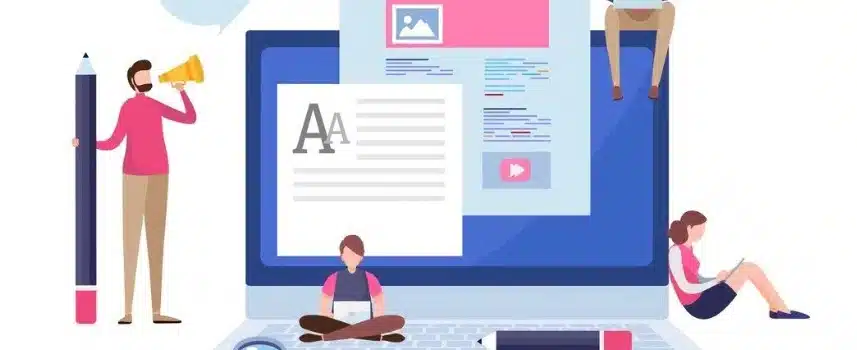How effective is your website at converting visitors into customers? Chances are that the majority of your website visitors aren’t converting into buyers. And that’s to be expected.
According to the latest data from Unbounce, the median conversion rate in 2024 was 6.6%. Some industries did better, of course. However, others did significantly worse — especially SaaS, where brands only managed to turn 3.8% of their leads into customers.
But why isn’t your site converting? And is there anything you can do about it?
This guide will review some of the most common conversion obstacles businesses overlook. Furthermore, it will provide tips on how to remove these conversion killers and boost sales outcomes without having to up your marketing spend or lower your prices. Let’s get into it.
Poor UX Design Choices
Many business owners mistakenly think that a beautiful website equals impressive conversion rates.
And, sure, having an aesthetically appealing online presence won’t harm your ability to sell. After all, many consumers form brand impressions based on their first interaction, which often constitutes a single look at your homepage.
However, aesthetic appeal is not the only thing that matters — especially when trying to convince web visitors to buy from your brand.
Instead, to remove common conversion killers from your online presence, consider if UX design mistakes are making your web presentations clunky, difficult to use, or outright frustrating.
Consider the following data studying the impact of UX design on web visitor behavior. You’ll see several elements directly influence your ability to engage and convert customers.
- Slow website load times automatically decrease engagement rates and increase the likelihood of a web visit resulting in a bounce.
- Lack of mobile responsiveness causes approximately one-third of web visitors to stop interacting with your website.
- 76% of websites have poor-to-mediocre navigation design, making it difficult for visitors to find relevant products and automatically harming their likelihood of converting.
What do these findings reveal? They demonstrate that making (even small) UX design tweaks could help remove common conversion obstacles from your website.
For an example of what great website UX design looks like, check out the Bay Alarm Medical site. It’s not only visually pleasing but also fast, responsive, and easy to navigate. Most importantly, it’s exceptionally effective at explaining what the business offers to potential customers, making it the perfect online presentation of the brand’s product and a seriously well-thought-out tool for converting new clients.
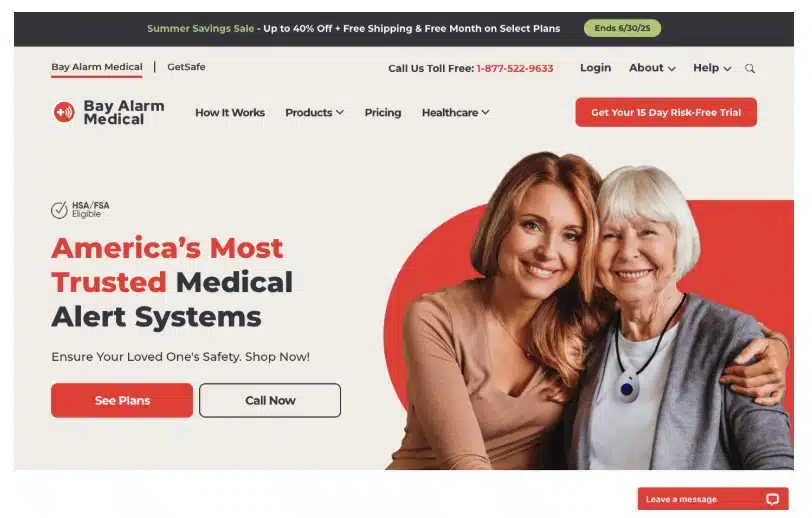
Source: bayalarmmedical.com
High Shipping Costs and Slow Delivery
What’s the primary reason internet buyers don’t go through with their purchases when shopping online?
According to the Baymard Institute, 39% of consumers abandon their carts during checkout due to high shipping costs and fees.
So, if you’re looking for tips on how to remove conversion obstacles from your site, consider making your shipping policies at least a bit more user-centric. Data shows that free, trackable, and fast delivery are essential to today’s buyers, with 66% of them seeking these perks when choosing what brands to shop with.
So, if you want to convince more people to buy from your brand, perhaps it’s pertinent to give your audience what they want.
For example, if you already offer affordable and quick delivery, you won’t have to make too many changes to your website. Simply create and showcase design elements to inform your audience of your dedication to making shopping with your brand fast and easy.
For instance, you could do something similar to Brain Ritual. This brand utilizes an attention-grabbing banner to communicate that it offers free shipping and a money-back guarantee — both of which are important to its ideal customers.
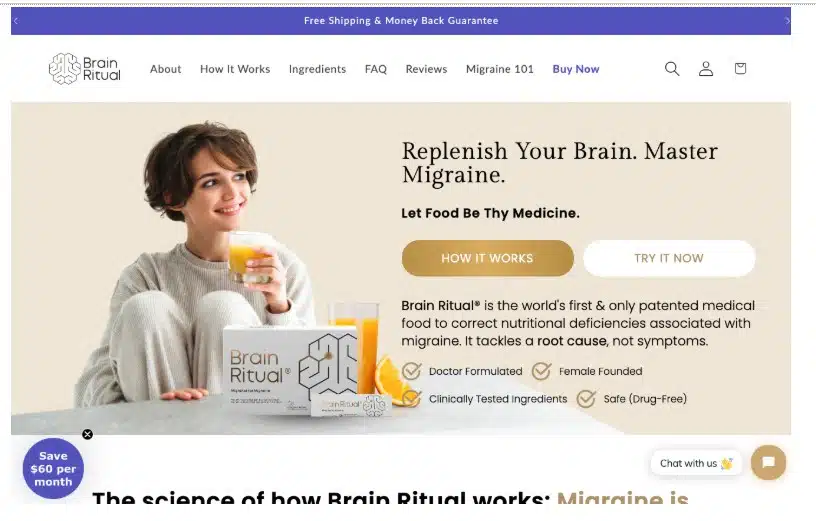
Source: brainritual.com
However, if offering such perks doesn’t fit your budget and pricing strategy, you could opt for a slightly more complex direction by including a free shipping calculator on your site.
This is precisely what Waterdrop does. With an integrated shipping calculator, the brand effectively informs consumers how much they need to spend to qualify for free shipping. The strategy makes it easy for shoppers to get the benefits they want; plus, it helps the brand boost its average order value, which is a significant win.

Source: waterdrop.com
Complex Checkout Process
Another possible reason your website isn’t converting is that your checkout process is too complicated.
Essentially, shoppers don’t want to have to create an account to buy something (especially not if it’s an impulse purchase). They often have zero patience for elaborate shopping processes.
Instead, 77% of people demand convenience (which consists of speed, comfort, and accessibility). And they’re even willing to pay more to receive such a CX.
So, when exploring strategies to help elevate conversion rates, evaluate your checkout process for unnecessary complexity.
Essentially, what you want to do is make it super easy and straightforward for web visitors to become clients. You can do this by not asking shoppers to create an account in order to get their hands on your products. You can employ one-click checkout tools like those provided by PayPal. Finally, you can do what Chilly Chiles does on its homepage and include a quick add-to-cart option to your product listings, which allows shoppers to purchase your products without having to visit individual product pages, significantly speeding up the process.
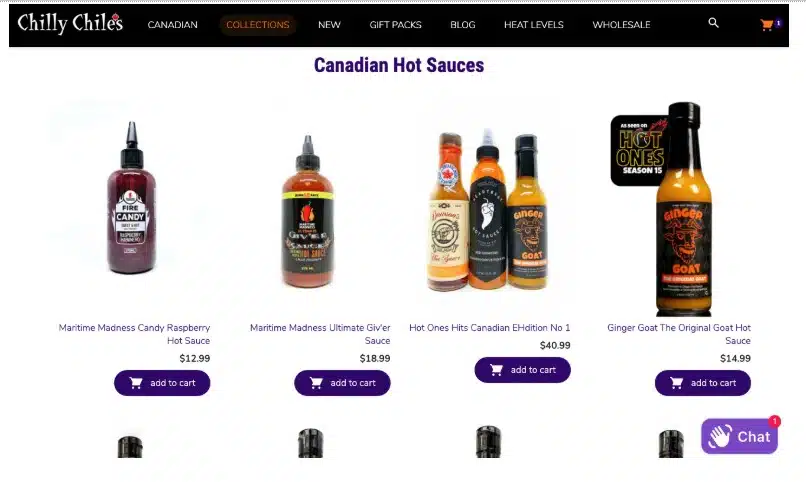
Source: chillychiles.com
Weak Value Propositions
If you’ve addressed the technical and CX-based reasons your website isn’t converting, it’s time to start thinking about how you’re selling your products and services.
So far, in 2025, the global economy has been rather volatile. Many consumers are responding to these changes by reducing their spending — especially with discretionary items.
So, if you want to ensure that your conversion rates don’t suffer (and even improve their chances of going up), you’ll want to learn how to communicate value to your web visitors.
The best way to do this is to show your audience that you understand what they need from you and that you have the expertise to remove their pain points and eliminate their frustrations. This approach won’t just establish your brand’s authority and credibility. It also aligns with what 73% of people expect from brands, which is to have an in-depth understanding of their unique needs.
With this in mind, try to identify the single most important outcome your audience wants you to provide.
For instance, WholeWoodPlayhouses understands its target audience’s ultimate aspiration — creating the ideal playhouse for their children. To ensure that web visitors genuinely comprehend that the brand can make this outcome happen via its solutions, it continually emphasizes that it provides high-quality products, customized solutions, DIY kits, premium materials, safety-oriented playhouses, and eco-friendly components.
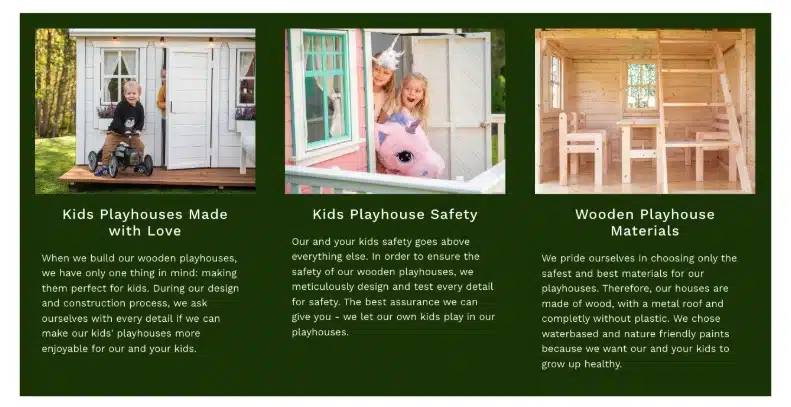
Source: wholewoodplayhouses.com
Absence of Brand Differentiators
What’s the one thing making it more difficult to convert customers than ever (both online and offline)? Simply put, it’s the sheer amount of choice today’s consumers have.
Thanks to globalization and ecommerce, your business is no longer just trying to stand out against local or direct competitors. Instead, it has to prove that it’s the best option for your ideal customers, who can easily hire a dozen other brands if they feel like those could provide better products and services.
With this in mind, it’s crucial for your website — as well as your entire marketing strategy — to incorporate relevant brand differentiators.
Fortunately, this doesn’t mean having to do a complete overhaul of your site. Instead, do your best to identify the factors that make your brand’s offer unique. Then, boldly emphasize them in high-value spots throughout your website.
For example, Brickface does it by stating that it’s New Jersey’s premier full-service home improvement and repair company.
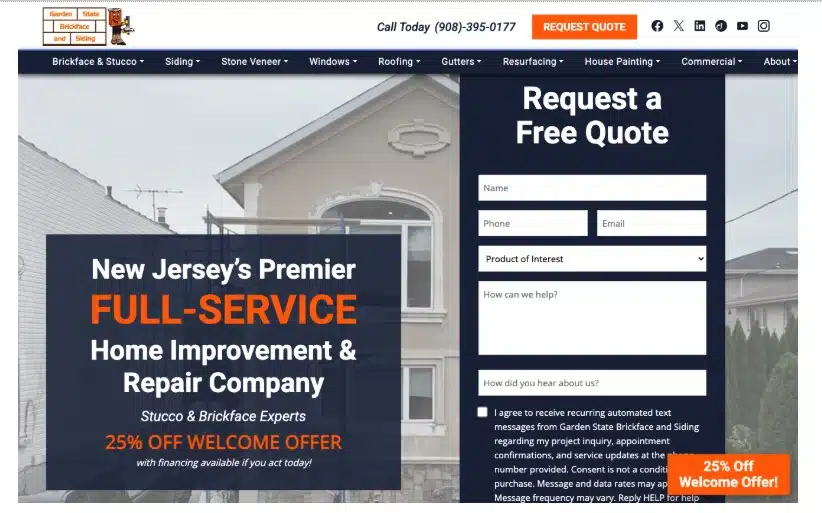
Source: brickface.com
Or, if you operate in a low-trust industry, you could do something similar to Thorne. This brand proudly shows off its third-party certifications, which testify to the fact that its products do what they claim, are safe for consumption, and rank well against similar alternatives in the supplements industry.
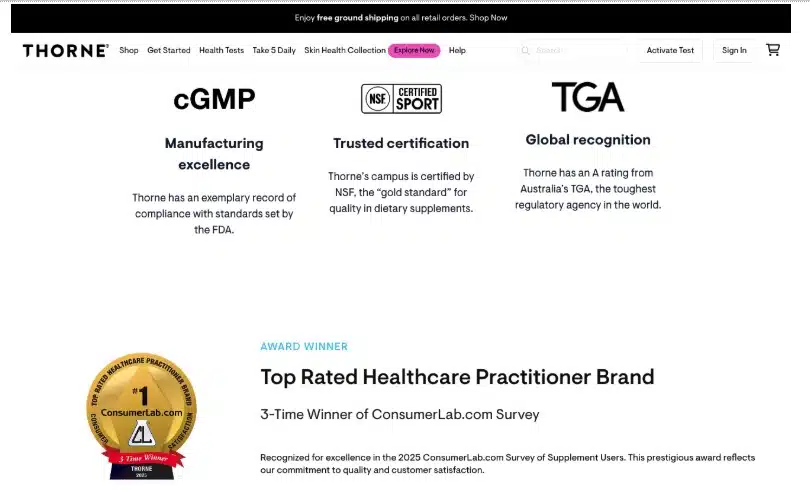
Source: thorne.com
Lack of Brand Trust
While we’re on the subject of brand differentiators and third-party certification, one common reason why your website might not be converting successfully enough is if your target audience doesn’t fully trust your business.
Brand trust (and trust in all organizations) is diminishing every year. Yet, consumers feel like it’s more important than ever. Some of the latest studies have shown that most people won’t buy from a business they don’t consider trustworthy.
For instance, if you look at Edelman’s latest findings, you’ll find that 88% of shoppers make buying decisions based on trust — a factor that has become as important as price and quality.
The great news is that elevating your brand’s credibility doesn’t have to be a complex solution. Yet, its conversion-boosting effects are tremendous.
For instance, you can incorporate more social proof elements into your web design — especially in proximity to your conversion elements. Or, you could take a step further and invest in trust-building content that transforms real-life results into sales-boosting elements.
Check out how Netskope does it on its Customers page. In addition to presenting web visitors with concrete data, this brand also makes it easy for potential customers to evaluate its solutions by investing in video social proof. The format effectively elevates engagement rates and aids comprehension. Plus, it’s most consumers’ preferred way of learning about products and services, making it highly likely that web visitors will actually interact with the content and decide to convert based on what they found out.

Source: netskope.com
Inadequate Pricing Strategy
So far, we’ve mentioned that consumers are showing a tendency toward reducing (at least some of) their spending in 2025. But while this can be a genuine challenge — especially when aiming to boost website conversions — it doesn’t have to be an obstacle.
In fact, employing the right pricing strategy could be the key to showing your target audience that your offer is worth spending their hard-earned money on.
For example, instead of simply listing the prices of your products, consider emphasizing the added value each purchase comes with. Orangetheory does this marvelously by pointing out that each membership comes with special privileges, flexible schedules, 30-day cancellation options, and no long-term contracts.
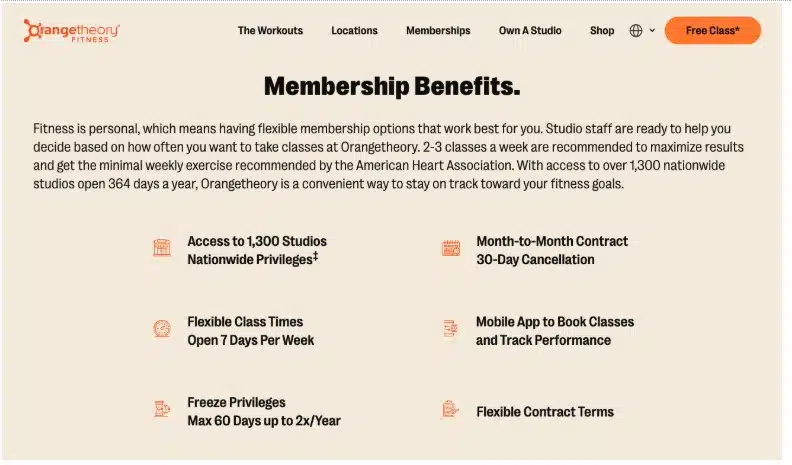
Source: orangetheory.com
Or, you could go in a slightly different direction and incorporate a dose of transparency into your pricing strategy. This will work particularly well if you’re trying to engage and convert an aspirational audience or if your branding strategy relies on positioning your business as a value-driven and customer-centric organization.
Check out how ISTO does it. Instead of simply stating the price for each of its articles, it includes a price breakdown section on product pages. This helps shoppers see exactly how much it takes to produce an item, making them more likely to recognize its value and decide to purchase it as an investment piece.
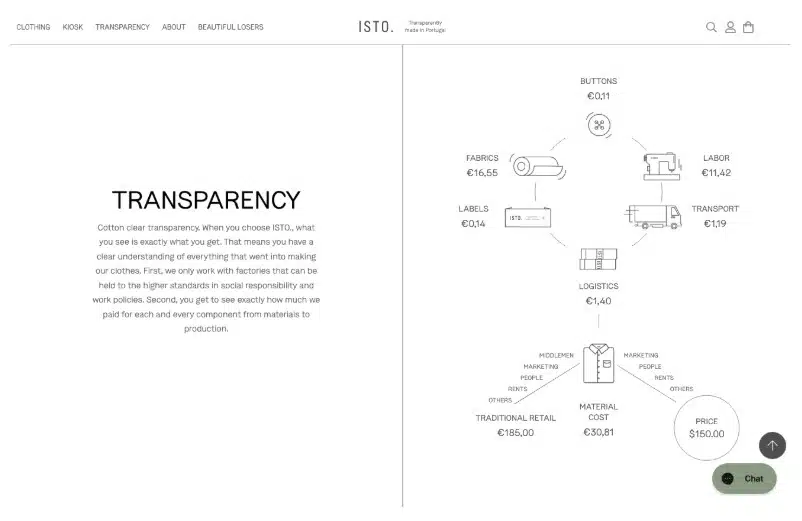
Source: isto.pt
Lack of Emotional Response
Finally, if your website conversion rates seem underwhelming, it’s worth considering whether the underlying reason might be that your content isn’t eliciting the right emotional response among your audience.
After all, most purchase decisions are subconscious (or based on feelings). So, if you want to boost sales, one of the most effective methods of doing it is to produce resources that speak to your audience on a subliminal level.
For example, addressing your prospects’ wants and aspirations is always a good choice. But positive emotions are not the only ones that sell. You might see similarly impressive conversion rates if you allow yourself to speak about your target audience’s fears or frustrations.
Check out how Purple does it. Knowing that it has to compete with multiple brands whose mattresses are just as comfortable as the ones in its offer, Purple opts to differentiate its brand by speaking about something its ideal customers want to avoid: pain.
It’s a great conversion-boosting tactic, and not just because of the unique value proposition. By addressing its customers’ frustration, Purple manages to form an emotional connection with its prospects, ensuring that its marketing messages perfectly align with their desired outcomes.

Source: purple.com
Final Thoughts
Having a website that doesn’t convert can seem like the end of the world (or, at least, your brand’s profitability). But even if you’re seeing lower-than-average conversion rates, there’s no need to panic. There are plenty of simple and effective solutions to help you reach your sales goals.
So, don’t hesitate to try out the tactics discussed in this guide. By addressing and removing the conversion killers listed in this article, you can easily eliminate obstacles from your prospects’ journey through the sales funnel. Moreover, you can elevate the effectiveness with which you attract new visitors to your site, lowering your overall customer acquisition costs and leaving you more time to focus on providing your clients with next-level customer experiences.

